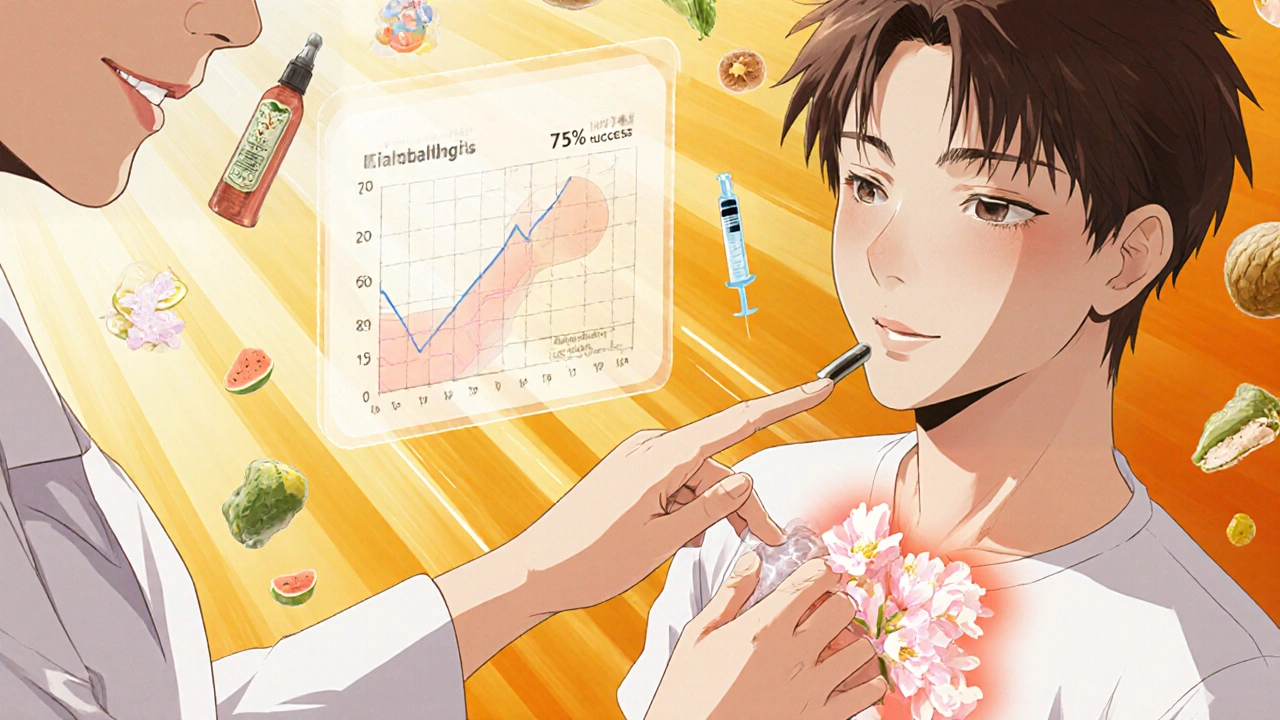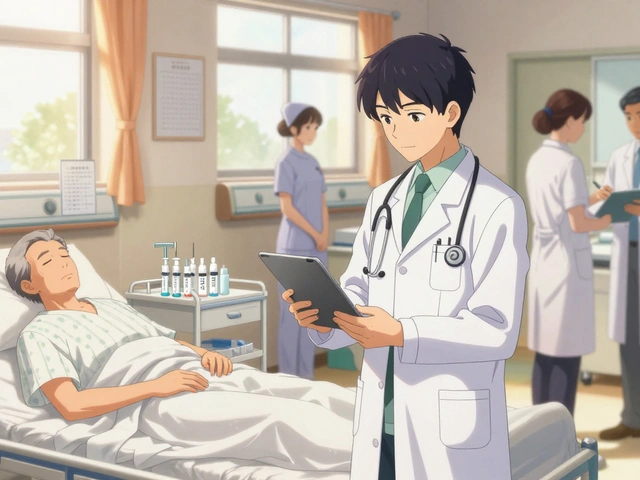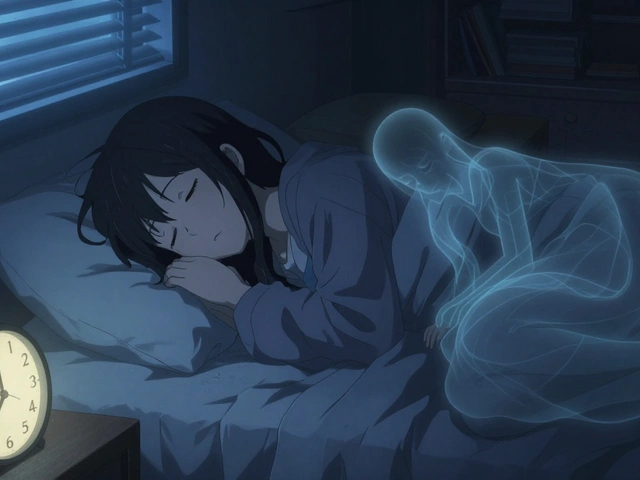Anal fissures aren’t rare-they’re common, painful, and often misunderstood. If you’ve ever felt a sharp, knife-like tear during a bowel movement, followed by hours of burning pain, you’re not alone. About anal fissures affect 1 in 10 adults at some point, with peaks in young adults and new mothers. Most people assume it’s just hemorrhoids, but it’s something different: a small tear in the delicate lining of the anal canal. And while it sounds simple, the body’s reaction to it can turn a minor injury into a long-term problem.
What Exactly Is an Anal Fissure?
An anal fissure is a small, linear tear in the mucosa-the soft tissue lining the inside of the anus. It’s not a cut you can see with the naked eye unless it’s advanced. Most occur in the posterior midline (back of the anus), which is why 9 out of 10 cases show up there. The front (anterior) location is less common and sometimes signals another issue, like Crohn’s disease.
Acute fissures are fresh, clean, and shallow. They hurt like hell during and after a bowel movement, often for 30 to 90 minutes. You might see a bit of bright red blood on the toilet paper or in the bowl. Chronic fissures, which last longer than eight weeks, look different. They develop a small skin tag near the tear (called a sentinel pile) and a swollen anal papilla above it. These are signs the body has given up on healing itself.
Why Do They Happen? It’s Not Just “Straining Too Hard”
The biggest cause? Hard stools from constipation. When you push, the pressure tears the lining. But here’s the twist: it’s not just the stool. Once the tear happens, your body’s natural response makes it worse.
The internal anal sphincter-a ring of muscle you can’t control-goes into spasm. That’s your body’s reflex to protect the wound. But instead of helping, it cuts off blood flow to the area by 40-60%. Less blood means less oxygen, less healing. The pain stays. The spasm stays. The tear stays. This is called the pain-spasm-ischemia cycle. It’s why some fissures never heal without intervention.
Other triggers include diarrhea (repeated wiping), childbirth (especially with episiotomy or tearing), inflammatory bowel disease, and rarely, infections or tumors. About 1 in 10 people diagnosed with a fissure actually have something else-like Crohn’s or even cancer. That’s why persistent symptoms need evaluation.
How Bad Does It Hurt? Real Patient Experiences
People describe the pain as:
- Like glass tearing inside
- A burning that lasts hours after pooping
- Radiating to the lower back, thighs, or even genitals
One patient on Reddit said, “I canceled three weekend plans because I was scared to have a bowel movement.” Another shared, “I used to sit on the toilet for 20 minutes trying to relax. It felt like a prison.”
Studies show 78% of patients feel intense pain during defecation. Over 60% avoid social events, skip workouts, or delay going to the bathroom because of fear. The emotional toll is real. Shame, anxiety, and sleep disruption are common. It’s not just physical-it’s psychological.
Healing Strategies: Start Simple, Then Step Up
Here’s the good news: 80-90% of acute fissures heal on their own within 6-8 weeks. But only if you do the basics right.
Step 1: Soften Your Stools
That means fiber. Not just “eat more veggies.” You need 25-35 grams per day. Most people get 12-15. That’s a huge gap.
Try this:
- 1 cup cooked oats (4g fiber)
- 1 medium pear (5.5g)
- 1/2 cup black beans (7.5g)
- 1 tbsp ground flaxseed (2.5g)
- 1 cup raspberries (8g)
That’s 27.5g. Done. No supplements needed.
Drink 2.5-3 liters of water daily. Fiber without water makes stools harder. It’s like trying to move dry cement.
Step 2: Sitz Baths
Warm water soaks aren’t just soothing-they’re healing. Sit in 10-15 minutes of warm (not hot) water after every bowel movement. It relaxes the sphincter, improves blood flow, and cleans the area gently. No soap. Just water.
Step 3: Pain Relief
Use lidocaine ointment (5%) right before you poop. It numbs the area for 15-20 minutes, so you don’t spasm. Don’t use it long-term-just for the worst days.

When Simple Measures Don’t Work: Topical Medications
If you’ve tried fiber, water, and sitz baths for 2-3 weeks with no improvement, it’s time for medication.
Three topical options exist:
| Treatment | Healing Rate | Side Effects | Application |
|---|---|---|---|
| Nitroglycerin (Rectiv) | 45-68% | Headaches (20-32%), dizziness | 1.25 inches applied to finger, inserted 1 inch into anus, twice daily |
| Diltiazem (2%) | 65-75% | Mild redness, rarely low blood pressure | Same as above |
| Nifedipine (0.3%) | 70-75% | Very few side effects | Same as above |
Doctors in Australia and Europe now recommend diltiazem or nifedipine first. Why? They work just as well as nitroglycerin but cause far fewer headaches. Nitroglycerin still works, but if you get migraines, it’s not worth it.
Apply it with a clean finger. Don’t use a cotton swab-it doesn’t reach deep enough. Wash your hands before and after. Use it for at least 6-8 weeks. Don’t quit early.
Botox Injections: A Middle Ground
If creams don’t help, a Botox injection into the internal sphincter can help. It temporarily paralyzes the muscle, breaking the spasm cycle. Healing rates: 50-80%.
Pros: No surgery. Quick procedure. Done in the doctor’s office. Takes 10 minutes.
Cons: Results last only 3-4 months. Up to 40% of people relapse within a year. Some need repeat shots. It’s not a cure-it’s a pause button.
Surgery: The Last Resort
For chronic fissures that won’t heal, a lateral internal sphincterotomy is the gold standard. Surgeons make a tiny cut in the sphincter muscle to reduce pressure. Success rate? 92-98%.
It’s done under local or general anesthesia. You’re home the same day. Most people return to work in 3-4 days. But healing takes 6 weeks. You’ll still have some discomfort. No one says it’s fun.
Downside: 14% risk of minor incontinence-usually just gas or occasional spotting. Rarely, it’s worse. But for people who’ve suffered for months, it’s often worth it.

What Doesn’t Work (And Why)
Some things people try-without success:
- Over-the-counter hemorrhoid creams - They don’t target the sphincter spasm. They just numb the surface.
- Witch hazel wipes - Soothing, yes. Healing? No.
- Just waiting it out - If you’re still in pain after 6 weeks, you’re not healing. You’re stuck in the cycle.
And here’s a big one: not taking fiber seriously. In 38% of failed cases, patients said they “tried fiber” but only ate a banana and called it good. That’s not enough. You need consistent, daily intake.
What to Watch Out For
See a doctor immediately if you have:
- Pain that gets worse, not better
- Bleeding that’s dark, not bright red
- Multiple fissures or ones in unusual places (front, side)
- Weight loss, fever, or diarrhea that won’t quit
These could signal Crohn’s disease, cancer, or an infection. Don’t assume it’s just a fissure.
Long-Term Outlook
Most people heal. The key is early action. The longer you wait, the more the muscle tightens, the less blood flows, and the harder it becomes to fix.
Thanks to better topical treatments, fewer people need surgery now than 10 years ago. In 2010, 12% of fissure patients had surgery. In 2023, it’s down to 8%. That’s progress.
But the risk is rising. Obesity, low-fiber diets, and sedentary lifestyles are pushing fissure rates up. Experts predict a 15-20% increase over the next decade. The solution? Start now. Eat fiber. Drink water. Don’t ignore the pain.
Final Thoughts
Anal fissures aren’t embarrassing. They’re medical. They happen to healthy people. They’re not caused by poor hygiene or being “dirty.” They’re caused by hard stools, stress, childbirth, or just bad luck.
Healing starts with two things: soft stools and relaxed muscles. Everything else-creams, injections, surgery-is just support.
If you’ve been suffering in silence, know this: you’re not alone. And you don’t have to live with this pain. There’s a path out. Start with fiber. Try a sitz bath. Talk to your doctor. Don’t wait for it to get worse.
Can anal fissures heal on their own?
Yes, most acute fissures heal on their own within 6 to 8 weeks with proper care: high-fiber diet, plenty of fluids, and sitz baths. About 80-90% resolve without medication or surgery. But if pain lasts longer than 8 weeks, it’s likely chronic and needs targeted treatment.
Is it safe to use lidocaine cream for anal fissures?
Lidocaine ointment (5%) is safe for short-term use to numb pain before bowel movements. It doesn’t heal the tear but helps break the pain-spasm cycle. Don’t use it daily for more than a week or two. Long-term use can irritate the skin or mask worsening symptoms.
Why do some fissures keep coming back?
Recurrence usually means the root cause wasn’t fixed. Common reasons: not enough fiber, not drinking enough water, chronic constipation, or returning to straining. In some cases, the sphincter muscle remains too tight even after healing. If fissures return, see a specialist-there may be an underlying issue like pelvic floor dysfunction or Crohn’s disease.
Can diet alone cure a chronic fissure?
Diet alone is rarely enough for chronic fissures (those lasting over 8 weeks). While fiber and fluids are essential, the muscle spasm and poor blood flow need direct treatment-like topical diltiazem or Botox. Diet helps prevent recurrence, but it won’t reverse the cycle once it’s established.
How long does it take to heal after Botox?
Most people notice reduced pain within 3-5 days after a Botox injection. Full healing usually takes 4-8 weeks. But Botox doesn’t fix the tear-it relaxes the muscle so the body can heal. About 40% of patients see the fissure return within a year, meaning repeat treatment or surgery may be needed.
Is surgery risky for anal fissures?
Surgery (lateral internal sphincterotomy) is highly effective, with a 92-98% success rate. The main risk is minor fecal incontinence-usually just trouble holding gas or occasional spotting. Severe incontinence is rare (under 2%). For most patients, the trade-off is worth it: no more daily pain for a small chance of minor leakage.
Can anal fissures cause cancer?
No, anal fissures do not cause cancer. But cancer can sometimes mimic a fissure-especially if it’s in the front of the anus or doesn’t heal. That’s why persistent, unusual, or recurrent fissures need evaluation by a specialist to rule out other conditions like Crohn’s disease or anal cancer.





Brandy Walley
November 22, 2025 AT 21:51Pramod Kumar
November 23, 2025 AT 23:17shreyas yashas
November 25, 2025 AT 10:53Suresh Ramaiyan
November 26, 2025 AT 17:52Linda Rosie
November 28, 2025 AT 03:06Vivian C Martinez
November 28, 2025 AT 23:08Jennifer Shannon
November 29, 2025 AT 14:48Suzan Wanjiru
November 30, 2025 AT 15:52Kezia Katherine Lewis
December 2, 2025 AT 11:57Henrik Stacke
December 3, 2025 AT 19:26Jennifer Skolney
December 5, 2025 AT 12:18JD Mette
December 7, 2025 AT 10:05